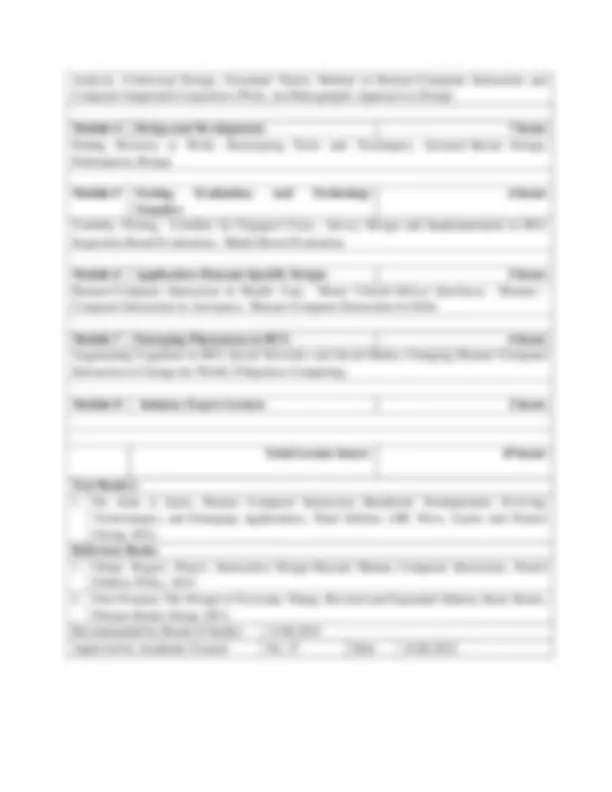



Study with the several resources on Docsity

Earn points by helping other students or get them with a premium plan


Prepare for your exams
Study with the several resources on Docsity

Earn points to download
Earn points by helping other students or get them with a premium plan
Community
Ask the community for help and clear up your study doubts
Discover the best universities in your country according to Docsity users
Free resources
Download our free guides on studying techniques, anxiety management strategies, and thesis advice from Docsity tutors
This pdf has unit one lecture notes
Typology: Lecture notes
1 / 2

This page cannot be seen from the preview
Don't miss anything!


ITE1014 Human Computer Interaction L T P J C 3 0 0 4 4 Pre-requisite EEE1001 Syllabus version
Course Objectives:
Analysis, Contextual Design, Grounded Theory Method in Human–Computer Interaction and Computer-Supported Cooperative Work, An Ethnographic Approach to Design Module:4 Design and Development: 7 hours Putting Personas to Work, Prototyping Tools and Techniques, Scenario-Based Design, Participatory Design Module:5 Testing, Evaluation, and Technology Transfer: 6 hours Usability Testing, Usability for Engaged Users, Survey Design and Implementation in HCI, Inspection-Based Evaluations, Model-Based Evaluation Module:6 Application-/Domain-Specific Design: 5 hours Human–Computer Interaction in Health Care, Motor Vehicle–Driver Interfaces, Human– Computer Interaction in Aerospace, Human–Computer Interaction for Kids Module:7 Emerging Phenomena in HCI: 6 hours Augmenting Cognition in HCI, Social Networks and Social Media, Changing Human–Computer Interaction to Change the World, Ubiquitous Computing. Module:8 Industry Expert Lecture 2 hours Total Lecture hours: 45 hours Text Book(s)